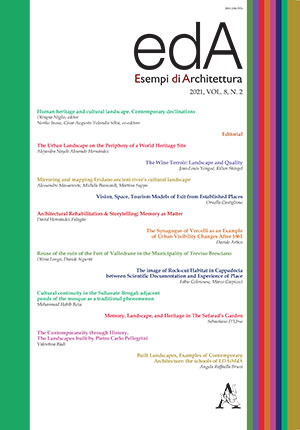Estratto da
ESEMPI DI ARCHITETTURA
International Journal of Architecture and Engineering
THE URBAN LANDSCAPE ON THE PERIPHERY OF A WORLD HERITAGE SITE
ESEMPI DI ARCHITETTURA
International Journal of Architecture and Engineering
THE URBAN LANDSCAPE ON THE PERIPHERY OF A WORLD HERITAGE SITE

Once a historic city achieves a World Heritage designation, great opportunities open up, as well as great challenges. The World Heritage cities in the case of Mexico, embrace this type of appointments as opportunities for economic growth, since they facilitate the injection of economic resources for the improvement of the urban image, for urban furniture, or for the rehabilitation of public buildings of historical and architectural relevance within the polygons declared as protected. However, both the historic city of Zacatecas, as well as other cities in Mexico that achieved this type of appointment, are also developing cities, and in the specific case of Zacatecas, being in a ravine makes this development visible from any point of the city. Historic city, a fact that has tried to be controlled by implementing local regulations that avoid a greater impact on the urban image from the historic center World Heritage. An architectural typology has been created in the periphery of the mountains where the population has interspersed their own tastes and needs with the typical architecture of the historic city, generating typologies that are now part of the visual continuity of a historic center declared as World Heritage that continues to evolve.Keywords: Landscape, Architecture, City, Periphery.
| pagine: | 149-159 |
| DOI: | 10.4399/97888255398752 |
| data pubblicazione: | Dicembre 2020 |
| editore: | Aracne |








